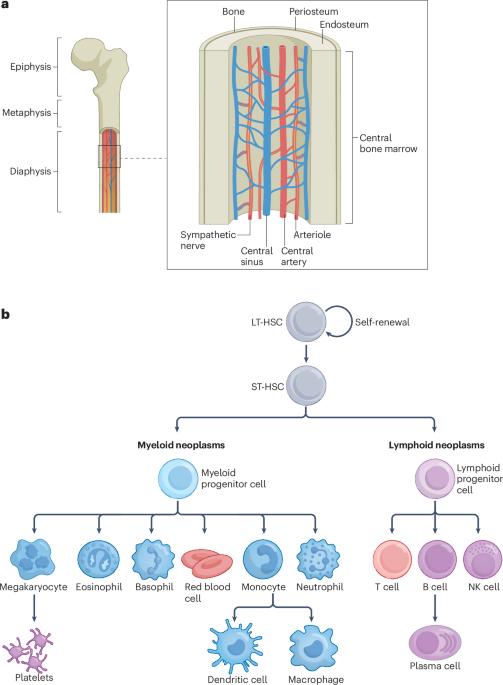Mechanical signatures and models of the bone marrow niche
IF 37.6
引用次数: 0
Abstract
The bone marrow is a complex tissue with distinct cellular and mechanical heterogeneity, serving as the primary site for haematopoiesis. Under certain conditions, such as on the onset of mutations to healthy cells or alterations to the environment, the bone marrow can also become the origin of haematological malignancies, often characterized by uncontrolled self-renewal of hematopoietic stem cells, overproduction of immature progeny and remodelling of the tissue microenvironment. This remodelling alters the composition and mechanics of the extracellular matrix (ECM), facilitating the proliferation and metastasis of leukaemic cells. The elastic and dissipative properties of the ECM are hallmarks of both health and disease progression in different tissues. However, studying the mechanical properties of bone marrow is difficult owing to inaccessibility in situ. Advanced three-dimensional bioengineered models offer a way to recapitulate the mechanical properties of the bone marrow, but it remains challenging to incorporate the elastic and viscous components. Understanding the physiological and disease-specific mechanical ECM signatures is crucial for advancing bone marrow research and for developing therapeutics. In this Review, we explore the structure–function relationship of the bone marrow, emphasizing its complex mechanical behaviour, and discuss the bioengineered models that recapitulate the mechanical properties in the healthy and diseased bone marrow niche, stressing the importance of replicating ECM physiological and pathological mechanical signatures in the future. The bone marrow is the primary site for haematopoiesis but can also become the origin of haematological malignancies. This Review discusses the complex mechanical behaviour of the bone marrow niche in health and disease, examining in vitro models to recreate and investigate the physiological and pathological mechanical signatures of the bone marrow.

骨髓壁龛的机械特征和模型
骨髓是一种复杂的组织,具有独特的细胞和机械异质性,是造血的主要部位。在某些条件下,如健康细胞发生突变或环境发生改变,骨髓也可能成为血液学恶性肿瘤的起源,其特征通常是造血干细胞自我更新不受控制、未成熟后代的过度产生和组织微环境的重塑。这种重塑改变了细胞外基质(ECM)的组成和机制,促进了白血病细胞的增殖和转移。ECM的弹性和耗散特性是不同组织中健康和疾病进展的标志。然而,由于无法在原位获得骨髓的力学特性,研究骨髓的力学特性是困难的。先进的三维生物工程模型提供了一种再现骨髓力学特性的方法,但将弹性和粘性成分结合起来仍然具有挑战性。了解生理和疾病特异性机械ECM特征对于推进骨髓研究和开发治疗方法至关重要。在这篇综述中,我们探讨了骨髓的结构-功能关系,强调其复杂的力学行为,并讨论了再现健康和患病骨髓生态位力学特性的生物工程模型,强调了未来复制ECM生理和病理力学特征的重要性。骨髓是造血的主要部位,但也可能成为恶性血液病的起源。这篇综述讨论了骨髓生态位在健康和疾病中的复杂力学行为,检查了体外模型来重建和研究骨髓的生理和病理力学特征。
本文章由计算机程序翻译,如有差异,请以英文原文为准。
求助全文
约1分钟内获得全文
求助全文

 求助内容:
求助内容: 应助结果提醒方式:
应助结果提醒方式:


